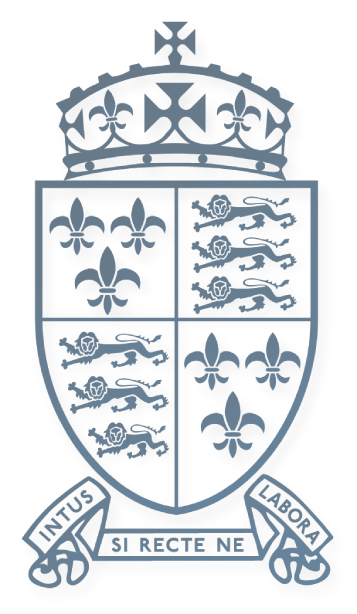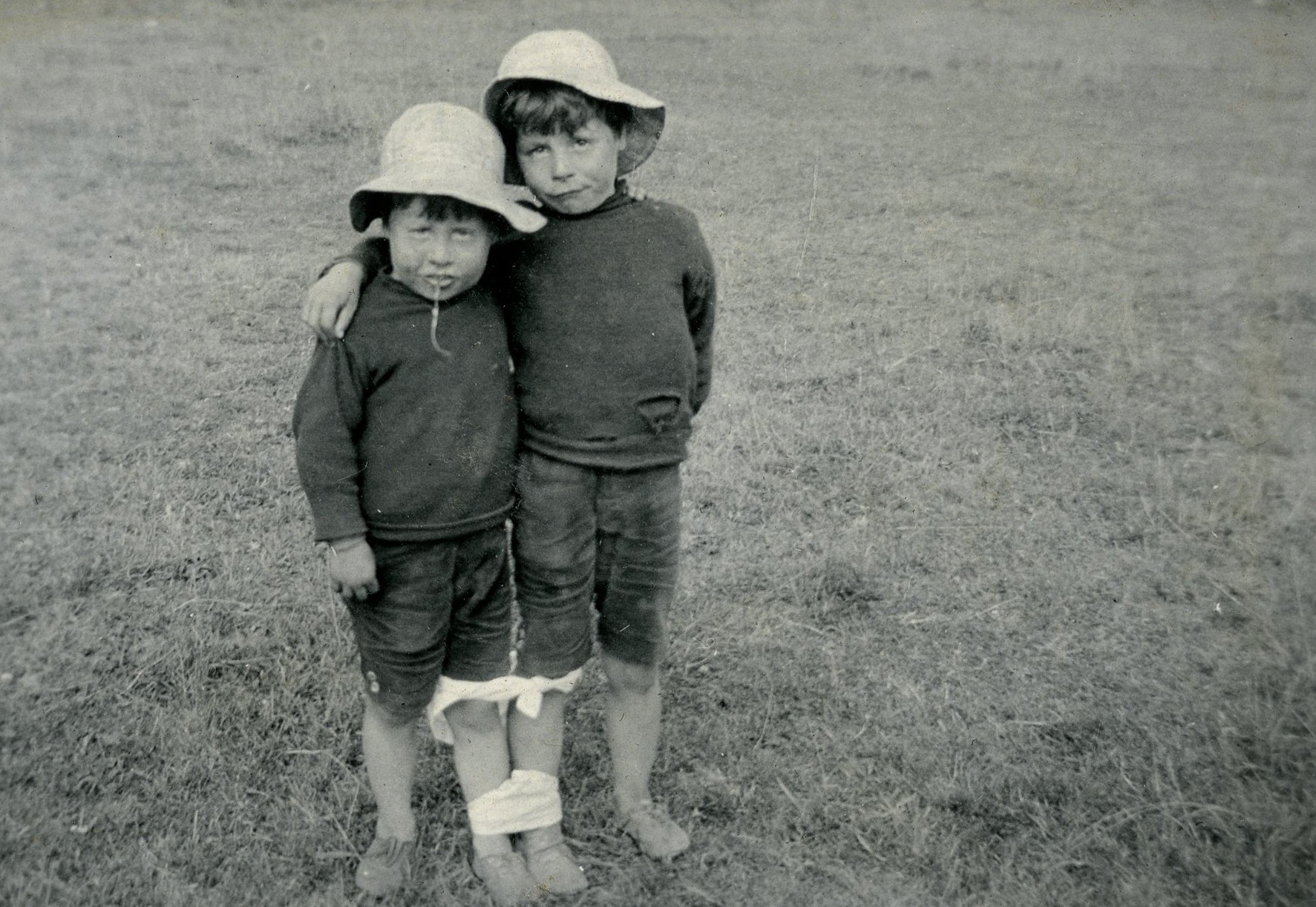
1903 – Founding of Shrewsbury House

The current pressure on independent schools to demonstrate their ‘public benefit’ is, justifiably, very strong. But for many, including Shrewsbury School, it is a responsibility that they have taken very seriously for a great number of years. The School’s partnership with Shrewsbury House (known as ‘the Shewsy’), a youth and community centre in Liverpool, dates back to 1903 and is stronger and more important now than it has ever been.
In the 1890s, Shrewsbury was one of a number of prosperous boarding schools that founded ‘missions’ in poor areas of big cities. The aim was to dispense Christian charity in the form of food and clothing and to support financially a team of people who would help keep children off the streets.
In 1896, Shrewsbury set up a mission in the East End of London, but the distance between them made communication difficult, and in the early 1900s, the Headmaster asked a former pupil, Revd Digby Kittermaster, to found a new mission in the School’s name closer to Shropshire, where Shrewsbury boys could visit in term-time and members of the Mission Club could visit Shrewsbury and feel themselves to be part of the School. The chosen location was Liverpool, and Kittermaster was instructed to set up the ‘Shrewsbury School Mission’ in the poorest area of the city he could find. And so it was that in November 1903, the Shrewsbury Boys’ Club opened in a disused pub in Everton.
The purpose of the Club was, as a Christian institution, to promote “godliness and good learning”. Before long, Salopians were helping to run the Club, and classes soon started in geography, boxing, joinery, science, elocution, cobbling and singing. As the Club’s first ‘Missioner’, Kittermaster’s original intention had been that contact with Salopians would help “civilise and refine” the characters of the Liverpool boys. But it is not in the nature of Liverpudlians to be patronised. Moreover, it quickly became clear that Salopians had as much, if not more, to learn from the members of the Club. And this mutual respect is a key reason why the link between the Club and the School has been so successful. From its earliest days, the link has long been seen as two-way and on-the-level, of great mutual benefit. It has also produced many strong and long-lasting friendships between members of the two institutions.
In 1907, with numbers swelling, the Club moved to new, more spacious and better-equipped premises in Portland Place. By this time there were regular exchange visits between the School and the Club, where the activities had spread from table-tennis and billiards to gymnastics, football and other outdoor pursuits.

Photos: Mission Camp 1914-1916
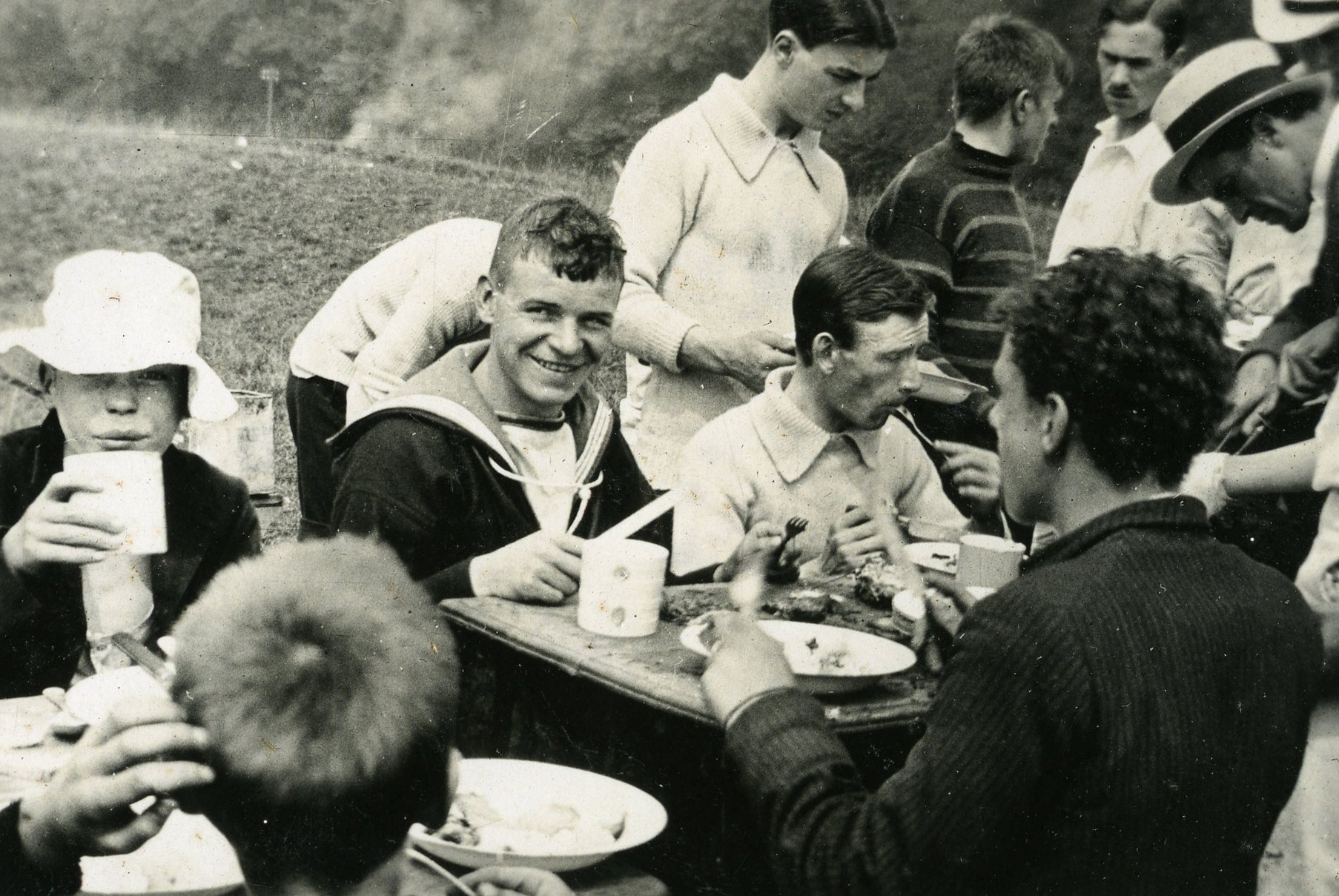
Kittermaster’s successors faithfully nurtured and promoted his aims, and the School’s support of the Club in Everton was invaluable, particularly during the years of profound deprivation during the Depression. In 1928, an Old Boys’ Association was set up. Its Honorary Secretary for almost 30 years was I.G. Barr-Adams, whose contribution to the Club during those years is incalculable. An Old Salopian who lived in Liverpool, he first became involved with the Club in around 1922, when he became its Librarian. In 1935 he started a News Sheet, which commented on local and world affairs. During the Second World War it was published two or three times a week and provided a deeply appreciated means of communication between the soldiers at the Front and their families at home.
Some people wondered whether the bond between the School and the Club would survive the introduction of the Welfare State in 1948. In theory, some of the functions carried out by Shrewsbury House could now be provided by the public purse. Several public school ‘missions’ closed for this reason.
However, it was decided that in the case of Shrewsbury House, there was a further spiritual dimension which continued association with the School would help to preserve.
Revd James Hill, another Old Salopian, had become Missioner at Shrewsbury House. In 1944, he had also been asked by the Bishop of Liverpool to take on responsibility for the congregation of St Timothy’s Church (“St Tim’s”).
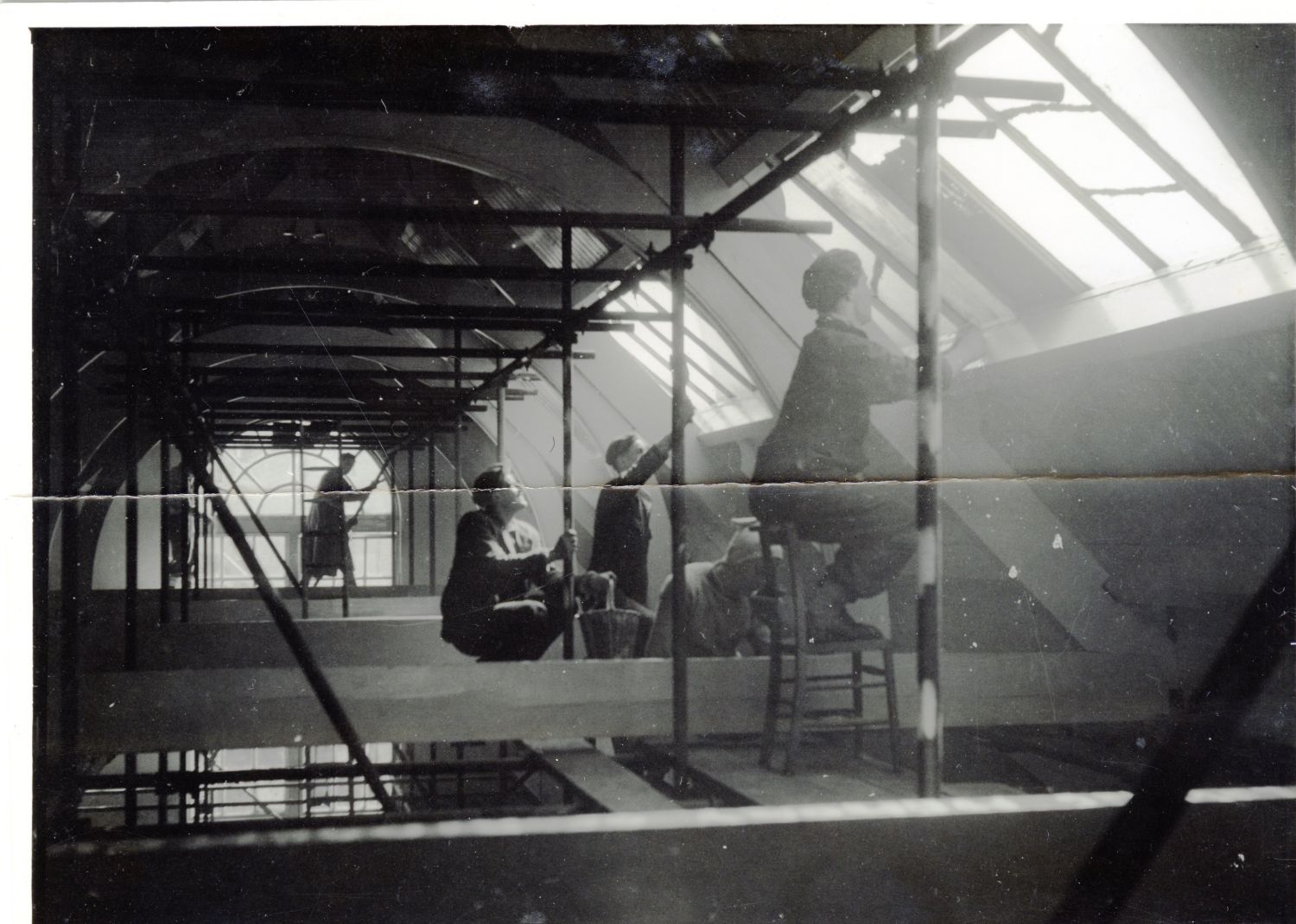
Photo: Cleaning and painting at St Timothy's Everton 1949
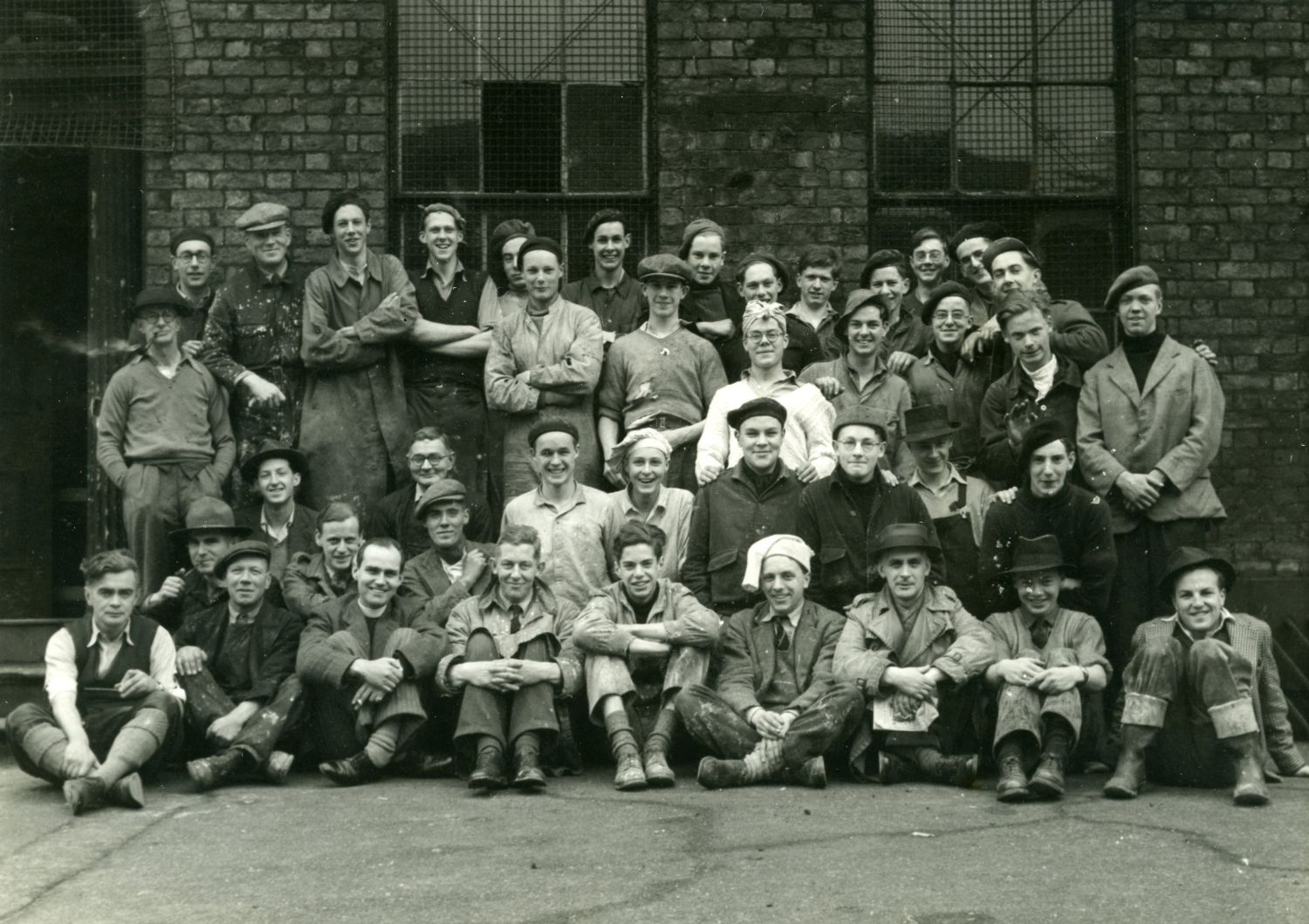
Adrian Struvé (Teacher of Modern Languages at Shrewsbury School, 1950-86; Member of the Shrewsbury House Management Committee, 1953-90; Acting Missioner at Shrewsbury House, 1962-63) describes how this led to a deepening of the bond between Shrewsbury House and Shrewsbury School:
The church building had suffered badly during the war, and yet the congregation, led by the doughty Duckett family, was hanging on grimly. It was their fortress. Clifford Martin, Liverpool’s Bishop at the time, had invited James Hill to supervise its eventual closure. He accepted the invitation but, determined to keep the Church afloat, he turned to his great friend on the School staff, David Bevan, who had done more than anyone to keep the Club-School link alive throughout the war. David went to the Headmaster, J.F (later Lord) Wolfenden, with the result that in the Easter holidays of 1949 a party of some forty boys and masters spent a week at St Tim’s, with Mr Duckett a builder, as clerk of the works, repairing, painting and generally doing up the whole building. The finishing touch was produced by the art master, Arthur Broadbent, who painted the four evangelists in the walled-in east windows.
This simple, amateur act of service by the School had a dramatic effect in West Everton. It brought the School right into the community, not just into the Boys’ Club. It is doubtful whether the school authorities realised the significance of this, but in fact it was the first step into a changed relationship. The School was becoming no longer the patron and supporter of just one of the many Liverpool youth clubs. It was developing into the equal partner with an entire inner-city community. From now on the School, from a privileged and beautiful countryside, would always be welcome in West Everton, one of the most deprived communities in the country – and vice versa.
An old Club member Eddie Cartwright summed it up eloquently: “To stroll through those grounds at the School and to stroll the streets of Everton are two completely different life experiences, and yet those places and people have been united through the Club for more than a hundred years, brought together and teaching and learning from each other. It’s a tale of mutual respect and mutual advantage.” And what was said of the Club could now be applied to the whole community.
See: 1974 – Relocation and expansion of Shrewsbury House

